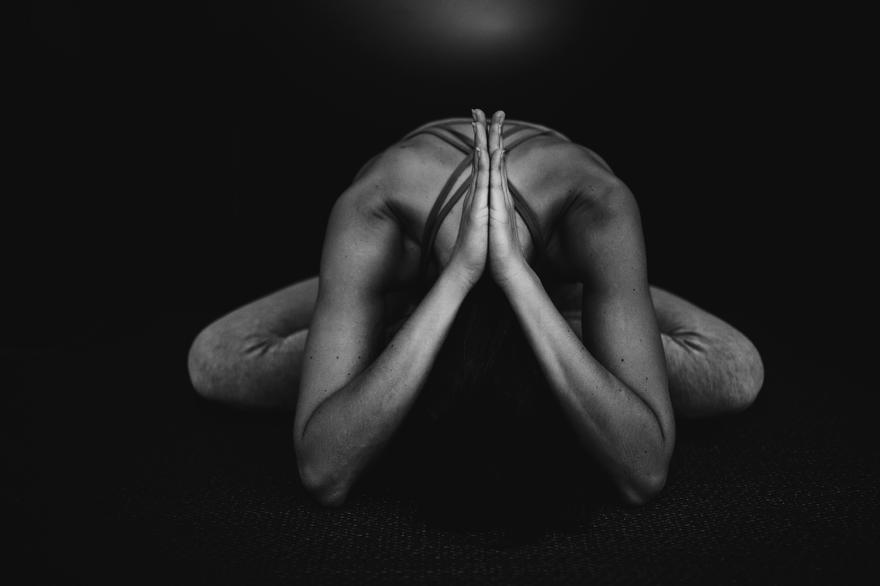Asana practice is spiritual practice

Constant practice is the secret to success. —Dharma Mittra
A standard cliché about asana practice is that its purpose is to prepare the body for spiritual practice, but that asana itself is nothing but bodily movement that does not transform one in fundamental ways. Many simply accept and reiterate this view, without thinking about it critically or examining the unstated assumptions that underlie it.
The most basic assumption underlying this view is that asana practice is not spiritual because the body is not spiritual. The profanation of the body that characterizes western civilization has slipped unseen into yoga. I want to unveil this assumption that profanes the body and forthrightly reject it.
The human body (as well as the bodies of nonhumans, of course) is sacred substance, for ultimately the body is entirely mysterious. The body is also mysterious in a more mundane sense, for no one knows or can know it in its staggering complexity. Therefore, it behooves us to awaken to the mystery of the body and its essentially spiritual nature. This awakening, by itself, will entirely reorient our lives and recalibrate our choices.
A related cliché about asana practice is that its purpose is to create a serviceable body—and “serviceable” is all we really need for life and for utilizing the body in spiritual endeavors (meditation, ritual, mantra recitation, and prayer). Accosted with this metaphor of serviceable (“sufficiently functional”) regarding the body, we would do well to inspect it closely as well. We may find it reminiscent of another fashionable platitude—that of “ecosystem services.” The two expressions are cognate: we need ecosystems because they serve humanity, and we need a workable-enough body because it serves us. Both conceptions rest on the self-importance of the human ego structure: of the species ego, on the one hand, and of the self “inhabiting” the body, on the other. Ecosystems serve humans, bodies serve our selves.
Not only are these ideas facile but they have it all backward. Humanity is here to serve Earth, not to be served by it, if we have any aspiration to realize ourselves as a species. And as individuals, we are here to serve our bodies, among other entities and beings, and not to make our bodies minimally “serviceable.”
Thus, we want neither to bypass the body altogether nor to settle with a “good enough” body, while we dive (seemingly by contrast) into the spiritual practices wherein actual transformation is to be found. Instead, we want to behold and treat our bodies as holy substance in all matters—how we eat, how we behave, how we carry our bodies, and how we move.
The body must be venerated at every level. For example, practicing yoga asana while subsisting on a diet of low-quality food or products of tortured animals is incoherent and a dead end.
Of course, other forms of movement (such as martial arts) are also designed to honor the sacredness of the body. I focus on yoga asana because that happens to be the movement I’m devoted to, especially as the holistic practice of hatha yoga.
Hatha yoga translates as “sun and moon,” meaning it is a complete system (yang + yin). But hatha yoga also means “forceful practice,” a less familiar definition. Hatha yoga pushes us to continually refine, open, purify, and strengthen the body. Importantly, however, the push of hatha yoga is not the push of the ego seeking to attain something for itself. Rather, it is the push of devotion seeking unity with divinity. To understand the push of devotion, think about the glorious story of Jacob who wrestled for one endless night with an angel, whispering to the angel: I will not let you go unless you bless me. We want to hold onto hatha yoga like Jacob held on to the angel.
Hatha yoga is not only spiritual in acknowledging the holiness of the body, it is spiritual also in its nuts-and-bolts makeup. We know that hatha yoga has 8 limbs (9 if we count the kriyas) and that asana is one of them. But when we do asana correctly many of the other limbs are brought actively into play. Pranayama for one, because yoga moves harmoniously with the breath and intrinsically cultivates deepening and extending the inhales and exhales. Asana also involves pratyahara (sense withdrawal), because as we practice yoga the Drishti (gaze) is kept steady and undistracted by the surroundings, while our attention is turned inward to the unfolding of breath, movement, and pose. Dharana (concentration) also comes online with asana because the mind must be focused to align movement, pose, and breath, ideally single-pointedly. A number of yamas (rules) and niyamas (observances) are inherently relevant to asana as well, including for example, ahimsa (non-harming) and self-study.
We’ve only begun to scratch the surface of how asana practice is spiritual. Adding another layer, the yoga practitioner may include silently repeating a mantra during practice. Mantra recitation profoundly hones the pranayama, pratyahara, and dharana facets of asana practice, as well as imbuing the movement itself with heightened coherence. Inwardly repeating a mantra—sacred words that often invoke a deity or the divine—imprints the mantra within mind and body during yoga practice.
All these aspects of asana are spiritual for they deeply transform body, mind, and life. At the same time, our discussion is not remotely intended to understate the importance of meditation, ritual, mantra, and prayer, which are often regarded as spiritual endeavors proper. On the contrary, the spiritual practice of asana enhances the quality of those endeavors.
Rob’s and my main yoga teacher, Sri Dharma Mittra, tells his students to dedicate the poses to the Lord. With this intention, the practitioner can unselfconsciously express the beauty and grace of the poses without any concern that narcissism may appear to be at play. Dharma also tells us to actively imagine that we are practicing yoga with all Creation. He teaches that when we devote ourselves to the spiritual practice of yoga asana—virtually daily over years and decades—diverse blessings flow. But don’t take anyone’s word for it! Ignite the fire of yoga, persevere, and find out for yourself.


0 comments
Leave a comment
Please log in or register to post a comment